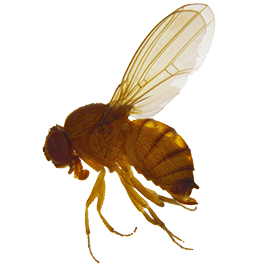Diagnosis
Morphological – adult
A factsheet and draft diagnostic identification protocol have been produced for Australia (Blacket et al. 2015 b).
Drosophilidae are characterised by;
- head with 1 pair of proclinate and 1 or 2 pairs of reclinate orbital bristles
- post-vertical bristles, when present, parallel or convergent
- arista usually branched above and below
- mesopleuron bare
- costa twice broken
- auxiliary vein not reaching costal margin (Bock 1976).
Sophophora species are characterised by relatively narrow cheeks and possession (in most species) on the abdominal tergites of dark posterior bands that are not interrupted in the mid-line (Bock 1980).
SWD has a uniform apricot coloured thorax that is free of stripes, spots or patterns, with unbroken dorsal bands on its abdomen (Blacket et al. 2015 b).
Male SWD have a single apical wing spot and a single row of apical dark combs running across (rather than parallel with) each of the basal two tarsal segments.
Female SWD possess an ovipositor that is strongly sclerotized with robust teeth (typically with 30-36 teeth, Seljak 2013), very strongly developed along the lower half towards the ovipositor tip with a saw-like lower edge, the ovipositor is 6-7 times longer than the diameter of the spermatheca (only 2-3 times longer in most other Drosophila species) (Hauser 2011).
Refer to diagnostic resource ‘PM 7/115 (1) Drosophila suzukii’ (Bulletin OEPP/EPPO Bulletin (2013) 43 (3), 417–424) for any suspect detections of SWD.
Morphological – larvae
Not available/included in this edition.
Molecular
DNA barcoding
BOLD reference data is available.
Published molecular tests
PCR-RFLP Test 1
BsrI: Data not available
HinfI: Data not available
HhaI: Data not available
Sau3AI: Data not available
SnaBI: Data not available
SspI: Data not available
Vspl: Data not available
PCR-RFLP Test 2
Data not available.
Gallery
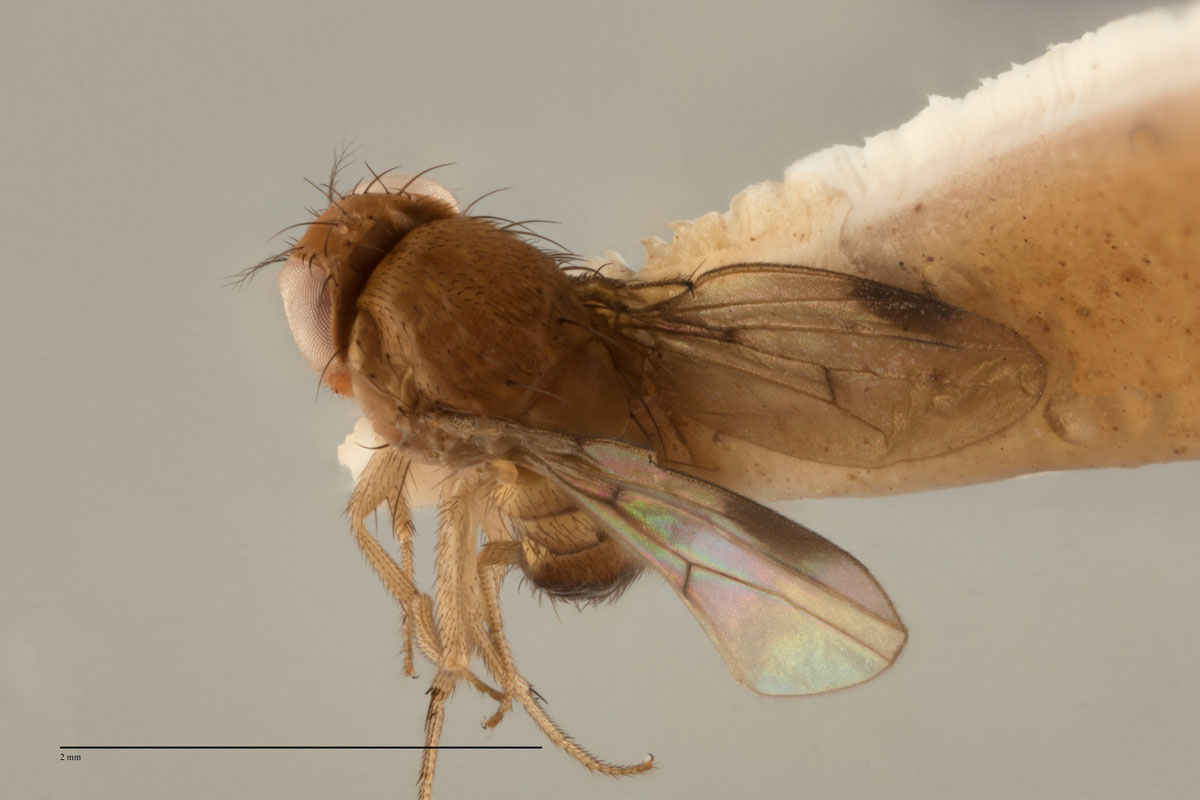 link
linkDrosophila suzukii - Entire Body Dorsal Classic DSZ001
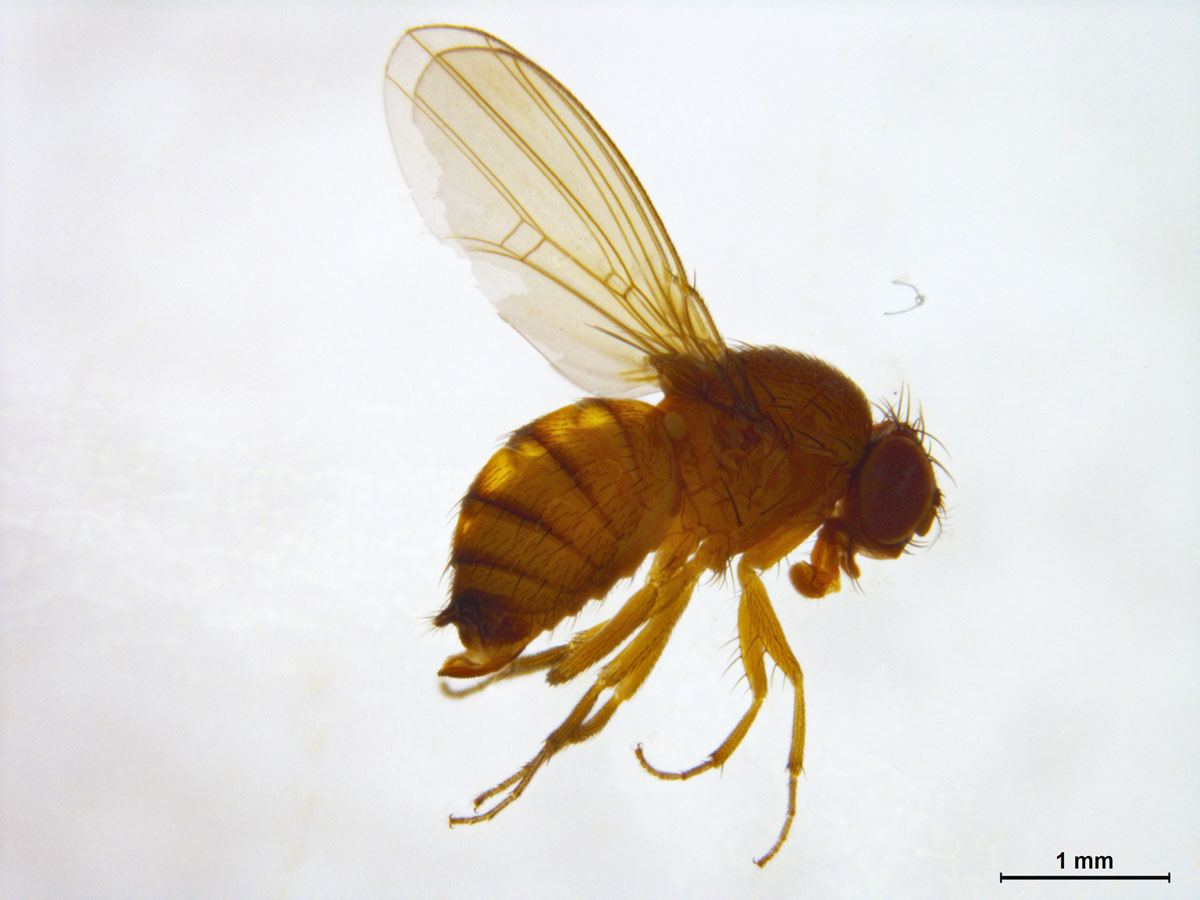 link
linkDrosophila suzukii - Entire Fly Lateral Female. Image: courtesy of Mark Blacket
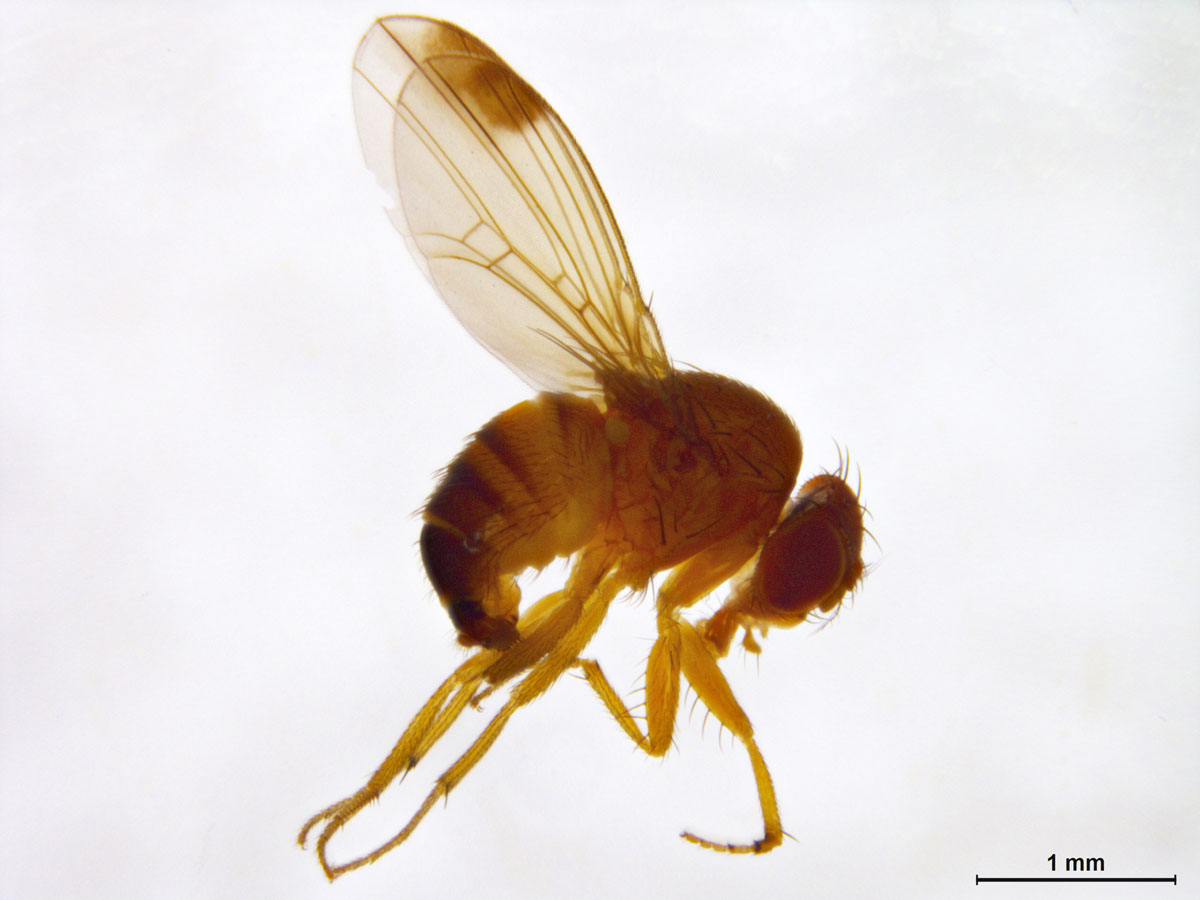 link
linkDrosophila suzukii - entire fly lateral male. Image: courtesy of Mark Blacket
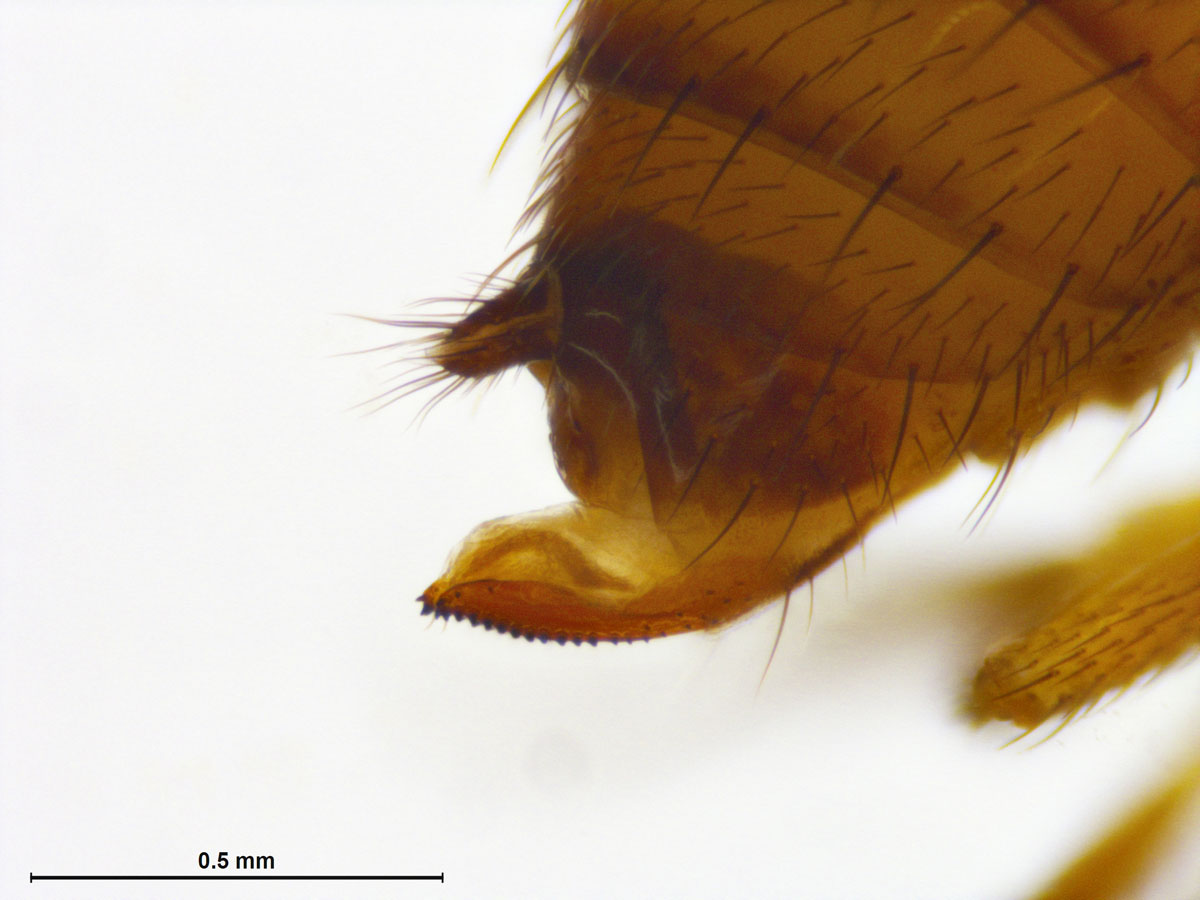 link
linkDrosophila suzukii - Female Ovipositor. Image: courtesy of Mark Blacket
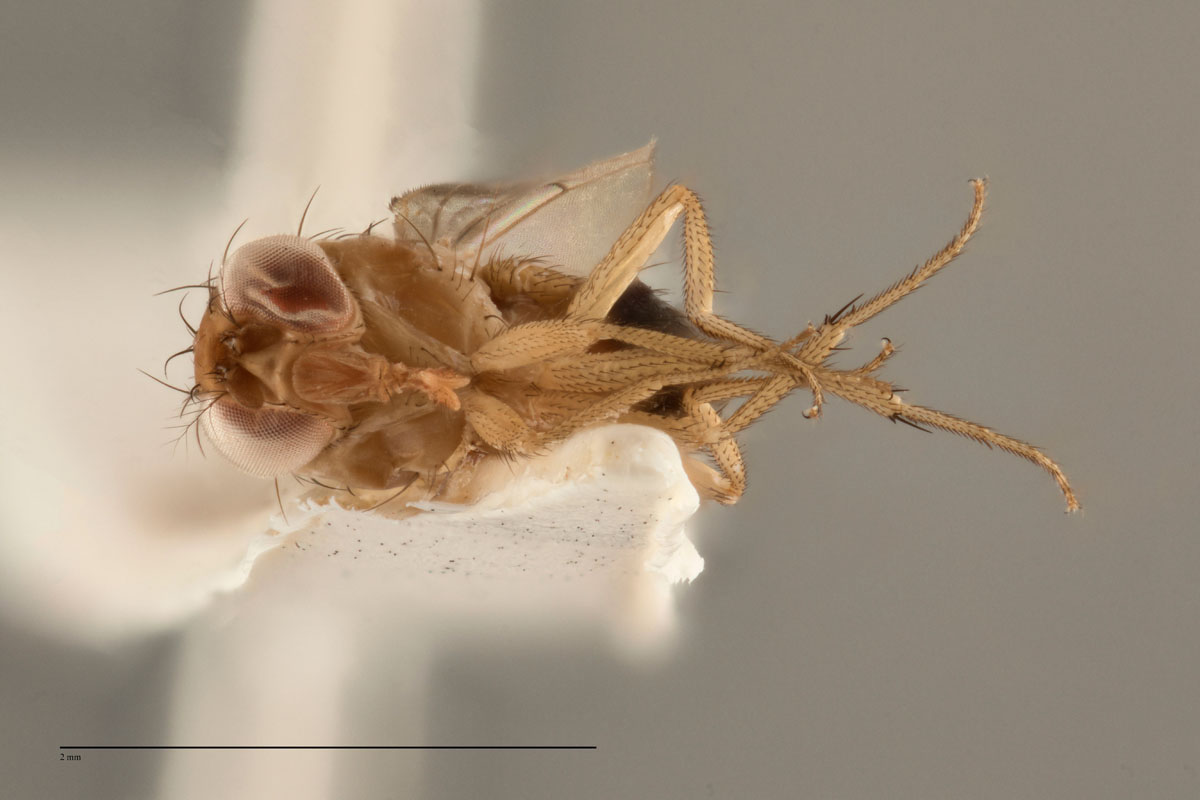 link
linkDrosophila suzukii - Head Classic DSZ001
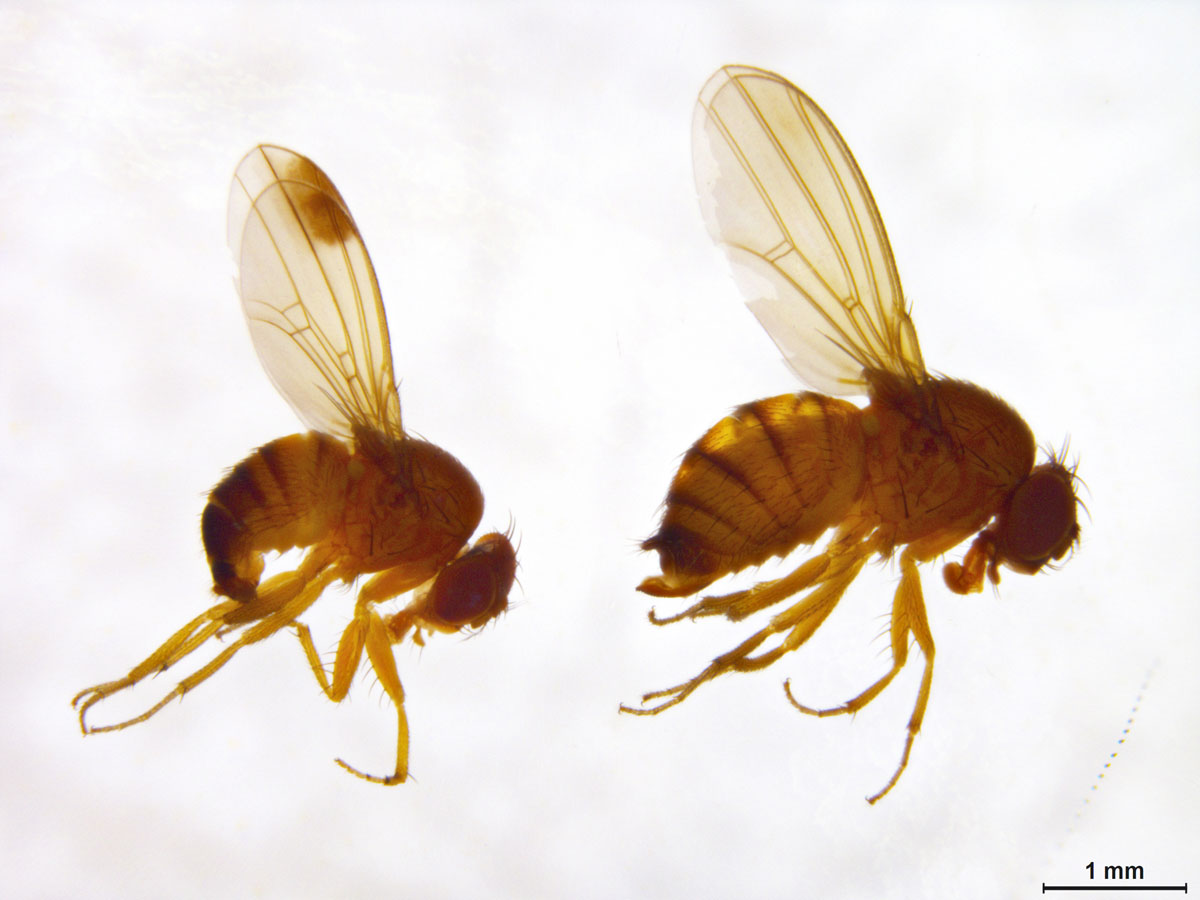 link
linkDrosophila suzukii - Male and Female. Image: courtesy of Mark Blacket
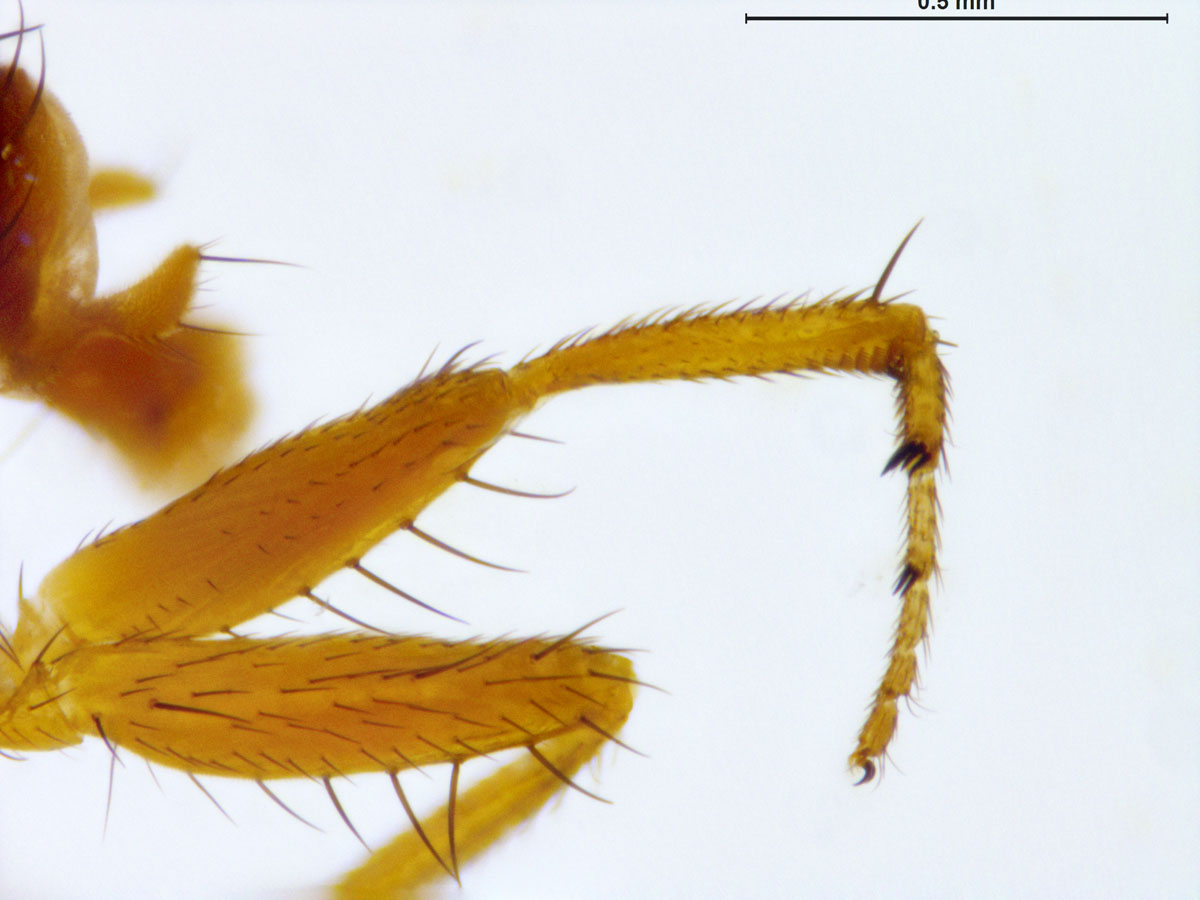 link
linkDrosophila suzukii - Male Comb. Image: courtesy of Mark Blacket
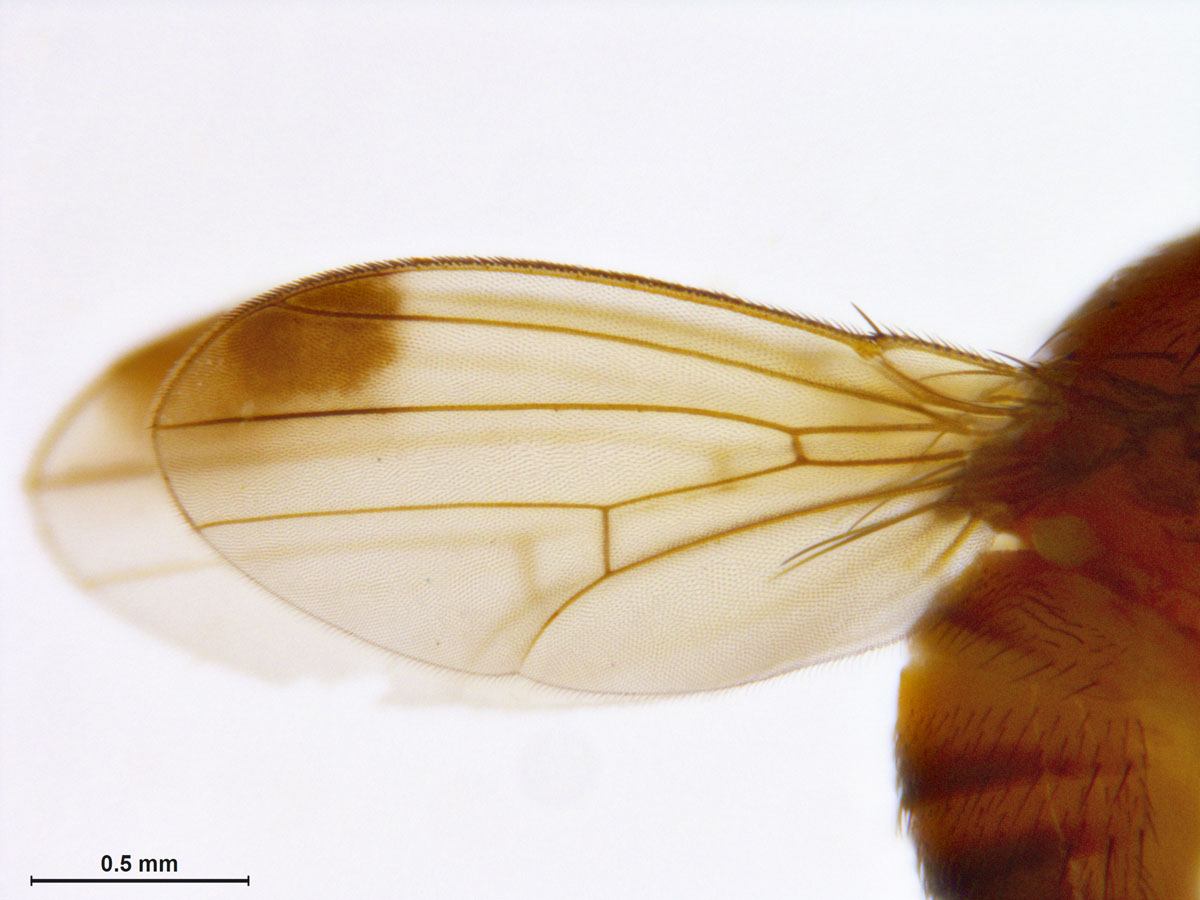 link
linkDrosophila suzukii - Male Wing. Image: courtesy of Mark Blacket
Host Range
Spotted Wing Drosophila (SWD), is one of the few species of Drosophilidae known to be a pest of healthy, unripe fruit (Walsh et al. 2011, Atallah et al. 2014), Drosophila generally prefer to breed in fruit that is already decaying and fermenting.
SWD is a highly polyphagous pest that breeds in a wide variety of mostly thin skinned small fruits (particularly Rosaceae) and is currently known from fifteen plant families (Cini et al. 2012):
- Actinidiaceae
- Adoxaceae
- Caprifoliaceae
- Cornaceae
- Ebenaceae
- Elaeagnaceae
- Ericaceae
- Grossulariaceae
- Moraceae
- Myricaceae
- Myrtaceae
- Rhamnaceae
- Rosaceae
- Rutaceae
- Vitaceae.
Major commercial hosts:
- Prunus species (cherries & stone fruit)
- Fragaria ananassa (strawberry)
- Rubus species (berries)
- Vitis species (grapes)
- Malus species (apples)
- Pyrus species (pears)
Distribution
SWD has recently and rapidly spread from eastern Asia to many other regions of the world (Walsh et al. 2011), including parts of North America, Europe and South America.
SWD is currently unknown from Australia.
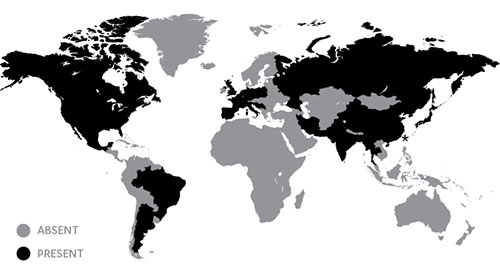
Similar species
A large number of Drosophila species are known from Australia and many Drosophila species have larvae that are commonly found in rotting fruit.
SWD belong to the Sophophora subgenus of Drosophila, a group that contains a large number of species (>300 worldwide), including the common cosmopolitan D. melanogaster and D. simulans. There are twenty species currently known from Australia (Atlas of Living Australia).
Male D. melanogaster and D. simulans are superficially similar to SWD in usually possessing dark tipped abdomens, but they differ in the morphology of the combs on their basal tarsal segments and in having non-spotted wings (Blacket et al. 2015 b).
Female D. immigrans are superficially similar in the morphology of the ovipositor, however the relative size of the ovipositor compared with the spermatheca differs substantially between these two species, and in SWD the ovipositor is strongly sclerotized with robust teeth very strongly developed along the lower half towards the ovipositor tip (Hauser 2011).
Pest Status
- Exotic
- High level, highly invasive, pest species of a large number of soft fruits
Attractant/Lure
Adults are known to be attracted to traps baited with a combination of wine, vinegar and soap (Landolt et al. 2012)
